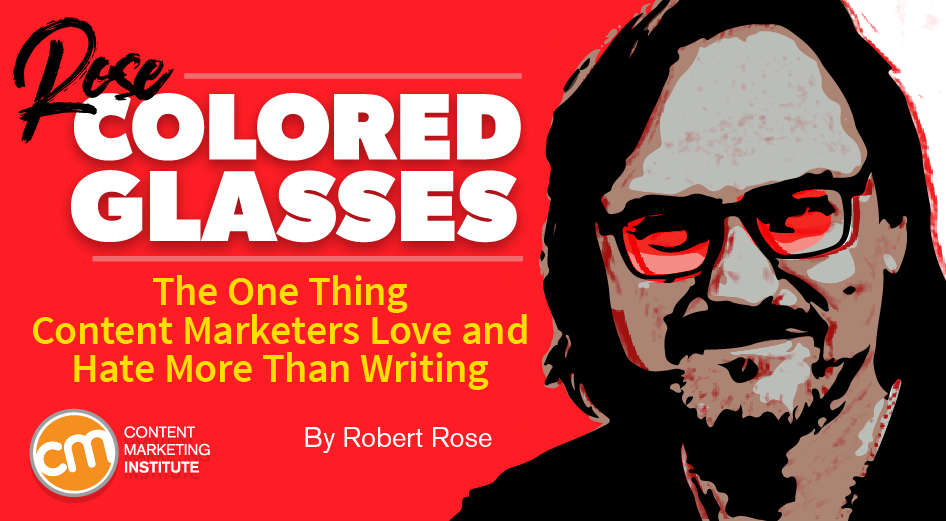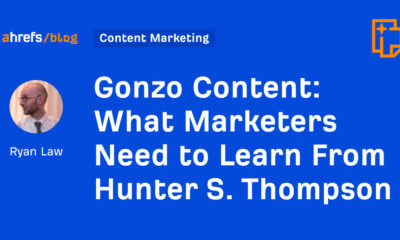MARKETING
The One Thing Content Marketers Love and Hate More Than Writing

Writing is a little like working out for me – I don’t love it, but I love having written.
I feel the same about technology. I don’t love enterprise content technology, but I enjoy having “technologied.” (Is that a thing?)
I know a lot of content marketers feel the same way – about writing and content tech. The ambivalence content marketers feel toward technology arises because so many of us work with a tech stack that wasn’t designed for content’s specific needs.
As I (too often) find myself telling clients, “That marketing tool can do that. But it’s not built to do that.”
Most people in #Content have a love-hate relationship with technology – because they’re using tools that weren’t built for their needs, says @Robert_Rose via @CMIContent. Click To Tweet
Why martech isn’t the (only) answer
Technology to improve the operations of marketing and communications isn’t new. In the 1980s, database marketing systems helped store customer information and enable pre-digital marketing efforts like mass mailings. I remember helping my mom figure out how to do a mail merge with Lotus 1-2-3 and WordPerfect. (If you haven’t had to hit Alt-F3 to “reveal codes,” have you ever really written?)
It’s easy to forget that the explosion of marketing technology in the early 2000s was born out of the drive to automate sales. (There’s a reason for the company name Salesforce.)
The marketing technology stack evolved out of the growing complexity and importance of digital marketing and the evolving sophistication of the technology enabling it.
Salesforce automation, email marketing, analytics, and digital content management became core to the not well-defined martech stack – a set of software intended to make marketing operations and processes more scalable, effective, and measurable.
There are myriad definitions of categories that belong in the martech stack. Scott Brinker’s famous MarTech 5000 chart documents more than 8,000 solutions across a half dozen categories.
The typical enterprise marketing stack might include tech for:
- Marketing resource management
- Content management
- Email marketing
- Marketing automation
- Social media publishing
- Customer relationship management
- Web analytics
But don’t @ me about the 14 other categories I missed. That’s the point. The marketing stack is a bit like digital marketing: ill-defined and anybody’s guess.
Why content needs its own stack
Content operations need different technology now that content has emerged as a distinct function from sales automation and CRM (just as digital marketing did).
Content strategy (when it exists) typically lives somewhere in the marketing and communications teams. But there are content professionals in many other parts of the business. Technical writers, content strategists, writers, multimedia experts, even sales and other executives all have a role in content. (I often say it’s easier to count who doesn’t create content these days.)
This dispersion across functional groups creates tension as content becomes a more strategic and complex function in the organization. Content professionals have to balance:
- Unique governance structures
- Scalability
- Workflow
- Content creation
- Content management
- Activation
- Measurement
- Repurposing
Unfortunately, the tools at their disposal have been chosen and implemented as part of a classic martech strategy. It’s not wrong, per se. But it’s designed to optimize marketing operations, not content operations.
The tools at most #Content teams’ disposal were chosen to support marketing operations, not #ContentOperations, says @Robert_Rose via @CMIContent. Click To Tweet
Content tech is the athleisure wear of technology
So, where does that leave us?
Organizations need to adapt the classic martech solutions to include technologies designed to optimize content operations.
Some of the unique attributes of the content technology stack might include tools built for:
- Editorial content and workflow collaboration. An entire content process happens before production tools put it into final form. Specialized technology exists to help with ideation, collaboration, intake, calendaring, workflow, and measurement of the actual content creation process.
- Content and asset management solutions. What is raw content, and what is an asset? These questions have unique answers given the context of a business’ content strategy. But you need different technologies for each. And I don’t mean you should shoehorn content or assets into whatever the company uses to manage the corporate website. The days of thinking that one enterprise content management solution can (or should) rule them all are over. The tech needed to support artificial intelligence-driven, personalized mini content experiences differs from that required for static corporate websites.
- Content operations optimization. Content operations differs from marketing operations. The challenge of managing multiple resources, freelance teams, media management, and content projects is different.
- Creation and enforcement of guidelines and standards. Pervasive technology that integrates into all the different tools (CMS systems, Microsoft Word, Google Docs, etc.) can help content creators adhere to content and editorial guidelines, standards, and playbooks. Technologies exist that can help content become more standardized by suggesting SEO changes, enforcing brand and editorial style guides, etc.
Developing, managing, and optimizing a content operation in business is a pressing concern. And it’s not going away.
The convergence of content marketing, content strategy, and content operations makes me think of the recent growth of athleisurewear in fashion. Both are now so pervasive they’re not trends any longer. They’re just how people work (and dress).
As you evolve your content strategy, ask for the technologies that can make your work and processes a heck of a lot more comfortable.
Ask for #Content technologies that make your work a lot more comfortable, says @Robert_Rose via @CMIContent. Click To Tweet
The upgrade will (to tweak a phrase from Lululemon marketing) enable you to move with confidence and comfort.
Get Robert’s take on content marketing industry news in just three minutes:
Cover image by Joseph Kalinowski/Content Marketing Institute



















You must be logged in to post a comment Login